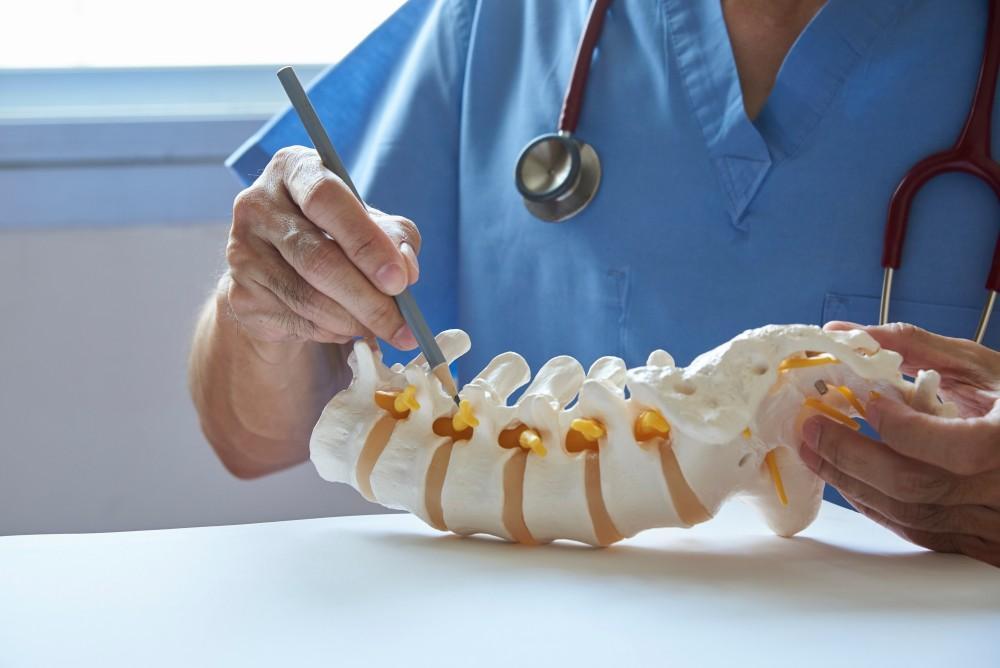
Treating Your Bone Spurs with Robotic Surgery

Bone spurs, medically called osteophytes, are smooth, bony lumps that often develop near joints, places where two or more bones come together. They grow over a long period of time and may not produce symptoms until they’re large enough to impinge on nearby nerves.
Bone spurs most commonly form in people over 60, but they may appear in younger people as well. Those who have osteoarthritis (OA), an inflammatory condition that’s common in older people, are much more likely to get bone spurs. OA results from long-term wear-and-tear of the bones’ cushioning cartilage. As the cartilage breaks down, bones rub against each other, causing pain, inflammation, and the formation of bone spurs.
Vertrae® has two locations, in Dayton and Springfield, Ohio. There, board-certified neurosurgeon and neurological spine surgeon Dr. Kamal Woods and his staff treat bone spurs using state-of-the-art technologies, including robotic surgery systems. These systems allow the doctor to map out a surgical plan in greater detail, as well as improve the accuracy of each movement during the procedure and produce better results.
Bone spur symptoms
As we’ve mentioned, some people with bone spurs are asymptomatic. However, spurs generally start to create symptoms when they:
- Compress nearby nerves
- Limit movement
- Rub against other bones or tissues
When any of these happens, you may experience:
- Bumps, especially in the fingers or toes
- Numbness and weakness, if the spurs are in the spine
- Radiculopathy, as pain travels down nerves
- Pain in tissues near the affected joint
- Stiffness and/or reduced range of motion
- Tendinitis (inflammation of nearby tendon)
- Tendon tears
The severity of the symptoms depends on the location of the spur and its size.
What is robotic surgery?
Robotic surgery, also called robot-assisted surgery, uses computer-controlled devices to position and manipulate surgical instruments, allowing surgeons to perform complex procedures with greater precision, flexibility, and control than using conventional techniques. Robotic surgery is most often associated with minimally invasive surgery — procedures performed through tiny incisions, but it can be used in traditional open procedures as well.
Robotic surgery works because the robot’s “hands” and instruments are so thin they can fit in the small incision space while still retaining a high degree of dexterity. But it’s the surgeon who calls the shots, telling the robot what to do and when. It’s the perfect blend of human experience and judgment with technological precision.
This is especially important when removing bone spurs on the spine, where there’s no room for error. Special surgical planning software helps Dr. Woods visualize the entire procedure in high-resolution, 3D detail before you’re even in the operating room, and intraoperative imaging offers a detailed view of your anatomy in real time, guiding him through the execution.
And minimally invasive procedures using robotic systems come with a number of benefits, including:
- Less collateral tissue damage
- Lower risk of infection
- Less blood loss
- Faster recovery
- Less noticeable scars
Once the bone spurs are removed, the pain you’ve been experiencing should diminish significantly.
If you have bone spurs that are causing chronic pain and inflammation, it’s time to come into Vertrae® for an evaluation and to determine if you’re a good candidate for removing them with robotic surgery. Give our office a call at either location to schedule a consultation with Dr. Woods, or book online with us today.
You Might Also Enjoy...


4 Benefits of Outpatient Spine Surgery

Am I a Candidate for Kyphoplasty?

Pulled Muscle vs. Pinched Nerve: What's the Difference?

4 Subtle Signs of Sciatica

